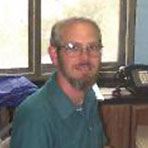Glenn Ledder

I am now a self-funded postdoc (ie, an emeritus professor) and have moved to Denver Colorado. I check email regularly and am still active in scholarship.
Feel free to use any of my materials for courses at other schools. I would
appreciate being informed about which of my materials have been used where.
Vital Info
Glenn Ledder
Department of Mathematics
University of Nebraska--Lincoln
e-mail: gledder@unl.edu
Supplementary Materials for Mathematical Modeling for Epidemiology and Ecology
My new book, Mathematical Modeling for Epidemiology and Ecology, was published by Springer-Verlag in April 2023. Supplementary materials include programs and data files.
Other BioMath Educational Resources
My BioMath educational resources include books, book chapters, pedagogical papers, and teaching modules.
Course Notes (for standard math courses)
These include stand-alone notes for topics in calculus, partial differential equations, asymptotics, and nonlinear optimization, and a full set of notes for queueing theory.
Projects (for standard math courses)
These include projects for various applied math courses.
Talks
I have given a large number of expository and pedagogical talks. I've also posted some recent research talks in mathematical biology.
Research Papers
My research work has been in mathematical ecology, population dynamics, epidemiology, plant physiology, and plant life history theory.
BUGBOX Mathematical Modeling Simulations
BUGBOX software is designed for inquiry-based learning of mathematical modeling for population dynamics. The software creates a virtual laboratory space inhabited by virtual insects. Students conduct experiments and devise mathematical models to predict the experiment results.
In BUGBOX_predator, students do experiments to find a relationship between prey density and consumption by one predator.
In BUGBOX_population, students observe the changes in the insect population to discover aspects of the insects' life cycle. They can construct a simple linear difference equation model, using their observations to estimate the parameter values. Four different scenarios give a sequence of increasing complexity.
Return to Top
Large Print macros for LaTeX
It is somewhat tricky to produce a large print version of a LaTeX document for visually-impaired students. I have worked out a general scheme that allows me to quickly convert documents to large print.
Last changed: May 30, 2023

